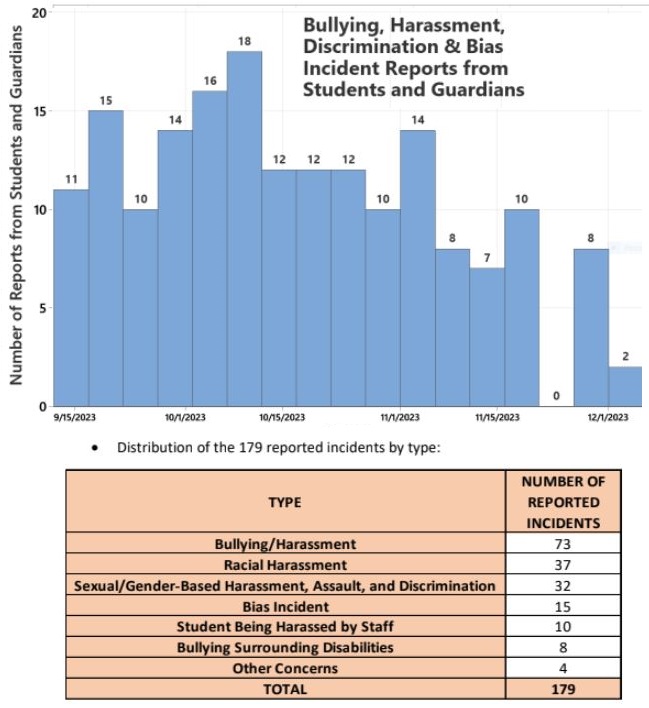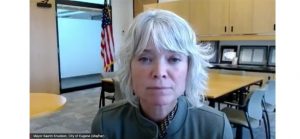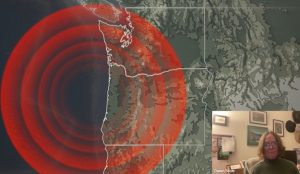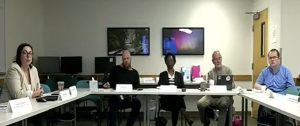Improved reporting reveals scope of bias and harassment in schools
5 min read
Oregon reported a rise in bias incidents in schools in 2023.
Drae Charles: My name is Drae Charles. I’m the city’s human rights and equity analyst. I want to give you a brief on hate and bias trends we’re seeing both here in our community and statewide.
[00:00:16] In July of this year, the Oregon DOJ released their fourth annual report. They’re seeing an increase in bias activity. Reports increased 72% for the Oregon DOJ. About 8% of Oregonians are impacted by bias activity every year.
[00:00:32] Consistent with past reports, race and ethnicity continue to be the leading factors when it comes to bias activity.
[00:00:39] Nearly one in three Black and Native individuals in our communities are victims of hate and bias, and nearly one in five Asian individuals and one in ten Latino individuals report being victims of bias.
[00:00:54] When we look at race being the number one factor in terms of bias victimization, the Black community continues to be the number one target community in that group.
[00:01:03] When we look at religious bias, almost exclusively the Jewish community; and then when we look at bias targeting the LGBTQ+ community, we’re seeing increases in bias targeting the trans community.
[00:01:15] The last little piece for the DOJ’s data set that I wanted to touch base on: They also highlighted that they’re seeing an increase in bias activity in schools.
[00:01:26] So in 2021, they had 150 reports to them from students or individuals who were under the age of 18. And this past year, 2022, they had 408 reports. That can be a combination of just increased reporting mechanisms, but it tracks with the trends that we’re seeing statewide.
[00:01:44] John Q: Speaking on International Human Rights Day, Drae also reviewed the latest hate and bias report from Eugene.
[00:01:51] Drae Charles: I’m looking at the City of Eugene’s’ 11th annual report, available on our website. This past year, the city of Eugene responded to 28 hate crimes. That’s the second lowest that we’ve seen in this 11-year tracking span.
[00:02:06] Race and ethnicity are the number one leading victimization factor.
[00:02:11] Our office also captures non-criminal hate incidents. For that, we’re at 34 for this past year. Of those 34, the Black community experienced 13 of them, the Jewish community came in at seven, and the third-highest population was our LGBTQ+ community.
[00:02:30] John Q: Drae shared ways to report hate and bias in the community.
[00:02:34] Drae Charles: I implore everyone, if you see hate and bias in the community, don’t remain silent. Please come forward, get support, get resources, find a community, do what you need to do to take care of yourself and our community at large.
[00:02:48] There’s many avenues you can go to report bias activity in your community. You can look it up online, https://www.eugene-or.gov/ReportHate. That will redirect you directly to Oregon DOJ’s online reporting form.
[00:03:03] You can schedule an appointment with our office: 541-682-5177.
[00:03:09] And then if you’d like to talk to the bias response hotline, you can call 1-844-924-2427. That hotline has translation services available in just about over 100 languages. So that should be your number one, go-to resource for responding to hate and bias in the community.
[00:03:29] And if anyone has any questions you can always send us an email at humanrights@eugene-or.gov.
[00:03:37] John Q: The 4J school board saw its first quarterly report on bias and harassment incidents in December. Superintendent Andy Dey acknowledged the district has struggled with data quality.
[00:03:49] Judy Newman (4J board member): I’m appreciative to see the report. I know how hard it’s been to get it to a place where you can at least have some confidence in the data, so thank you for keeping on it. It’s important.
[00:04:03] Andy Dey (4J superintendent): We feel like we’ve gotten better, more accurate information because a lot of the reports that we received last year, many of them are not about any issues that are listed. So, I feel like we’re getting some cleaner information about what’s happening.
[00:04:17] John Q: He said there were 179 incident reports.
[00:04:21] Andy Dey: Of 179 incident reports filled out, harassment being 73 of the incidents reported—that’s not staff determining what it is, that’s the complainant themselves indicating why they’re submitting—73 general bullying and harassment, whereas 37 felt it was racial harassment.
[00:04:41] Who is it that harassed you or bullied you? Unfortunately, 98 of the 179, that information was not provided.
[00:04:50] Sept. 6 to Dec. 1, 18 reports were submitted from staff members. So we do see staff members who are also using this system.
[00:05:00] John Q: He said the overall process requires a lot of staff time.
[00:05:04] Andy Dey: This is the second iteration, because what we did last year with the form didn’t work. Right now we have a Google Form. We’re looking at moving it to a different form that will allow us to have feedback.
[00:05:16] But there’s still quite a bit of work to do before we feel like we have a solid system in place. And a lot of it has to do with staff availability.
[00:05:27] Judy Newman: This is the first point-in-time (report) we’ve had. Were you surprised about the numbers?
[00:05:33] Andy Dey: So many people, that, what is it, 98 of them did not indicate any more information about who they felt had been the source of the harm.
[00:05:41] We’ll want to get some feedback from them about, for those of you that didn’t anonymously write down, why is it that you didn’t—what got in the way of that.
[00:05:49] So we would do one (report) really, every three, three and a half months, provide you with updates on where we are with this data and where we are with the process. And then at the end of the year, you have an annual report.
[00:06:01] John Q: Eugene’s 4J school district gets its first look at bias and harassment reports. The data is starting to reveal the scope of the problem. Oregon reported 408 incidents for the entire state for an entire year. With improved reporting, a single school district in Eugene is reporting 179 incidents in just three months.




